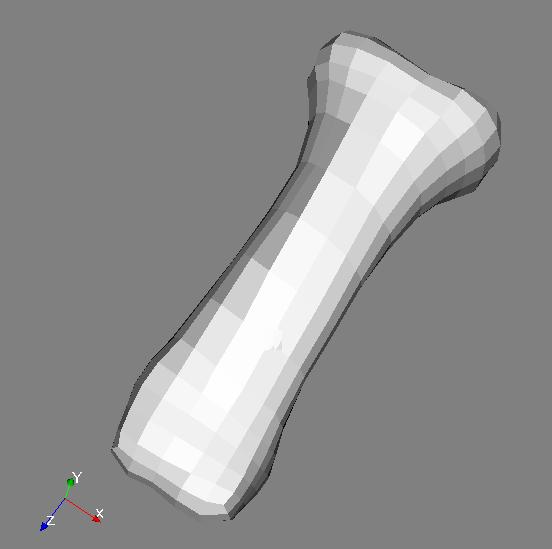2006 November Meshing Project Visit:Notes
From NAMIC Wiki
Home < 2006 November Meshing Project Visit:Notes
Contents
Project Scope
Within the Scope
- Meshing Algorithm Interfaces
- Interactive 3D tools integrated with Slicer3
- Tools to select subsets of elements/nodes
- Need to specify boundary conditions and external loads
- Evaluation and developement of meshing algorithms
- Strengths of existing methods
- Human time required to get good quality mesh
- Qualities of the meshes
- Visualizing Bad Elements!
- Custom mesh creations techniques
- Integrated with the imaging/segmentation workflow
- Strengths of existing methods
- Testing Segmentation techniques (perhaps with small adjustments)
- Validation statistics and group comparison statistics
- Extraction of Material Properties from CT scan (based on bone density measurement)
- Mapped Mesh
- Using registration to adapt atlas space mesh to individual subject
- Being developed as master's project at Iowa, integration with NA-MIC expected in project years 3/4
- Multiple Meshes for Contact Analysis
- Moving meshes ineractively to set up well posed analysis
- Visualizing contact surfaces (avoid overlap, but get close)
Out of Scope
- Finite element analysis will be done using commercial off the shelf tools (ABAQUS)
- Visualization of analysis results will use the tools from the FEM tools
- No higher order elements (stick with linear hex and tetrahedra)
- ABAQUS does not support high order elements at contact surfaces
- No Soft tissue analysis
- Won't actively rely on the MR data for segmentation
- Specialized cartilage segmentation and meshing is not included
Paper Targets from this work
- Hexahedral vs. Tetrahedral Mesh Quality
- TET is viewed as being stiffer than HEX meshes
- We are not trying to debate the relative quality of these two techniques. Instead, during our processing of sample data, we will empirically find the number of elements needed using each meshing technique
- Convergence study to find the optimal number of nodes for each technique that adequately matches the "gold standard" contact analysis
- Compare FEM results vs. empiral results from Fuji Film
- TET is viewed as being stiffer than HEX meshes
- EMSegmenter algorithms on the cadaveric CT / MR Datasets
- Evaluation of Inter-modality Registration for Orthopeadic Application
- Reposition the bones in a more closed position and repeat the CT scan
- Evaluate the use of the ITK registration capability to transform the MR data to match the new hand position
- Validation versus manual tracing
- Novel Meshing Techniques
- Comparison between existing commercial and open-source packages
Research Tasks
- Mesh quality statistics
- Visualization of the locations of bad elements
- Use/Extend mesh quality classes in VTK
- Model comparison module migrated to slicer3 module
- To support the validation aims
- Based on Kiran's tool
- Center of Mass initial registration / ICP Fine Registration
- Surface distance measurement
- Display of color coded surface distances
- Add additional statistical features
- Mean/Std Dev, etc per pair of subjects
- Population statistics support
NA-MIC Tie In Projects
- Segmentation
- EM Segmenter -- Kitware interface to Kilian's code
- Level Sets: stopping leaks at joints
- Neural Networks
- ITK infrastructure adaptations for dymanic instatiation
- ANNIE is currently used (GNU LGPL licensed tools that could be replaced if ITK can be extended)
- Interactive Widgets
- VTK Widgets for 3D object manipulation and parameter adjustment
- 2D KWWidgets for meshing tool control and statistical feedback
- NA-MIC Meshing Community
- Mesh untangling (project week project)
- can it be extended to hexahedral?
- Tetrahedral / image based methods
- SCI meshing work
- Pediatric Cardiac Electical Fields (Childrens/SCI/NEU collaboration)
- Mesh untangling (project week project)
- ITK Mesh Infrastructure
- ITK FEM Mesh merging with ITK Mesh
- VTK Mesh Infrastructure
- ** Visualization of the continuum mesh
- View of surface and wireframe (rendering issue with zbuffer)
- 'volume rendering' of mesh quality properties
- Representing transforms
- File Formats
- Mapping continuum meshes through transforms
- Reuse techniques Shape analysis/statistics projects (for comparing surface generation techniques)
- Possible further collaboration with Simbios

